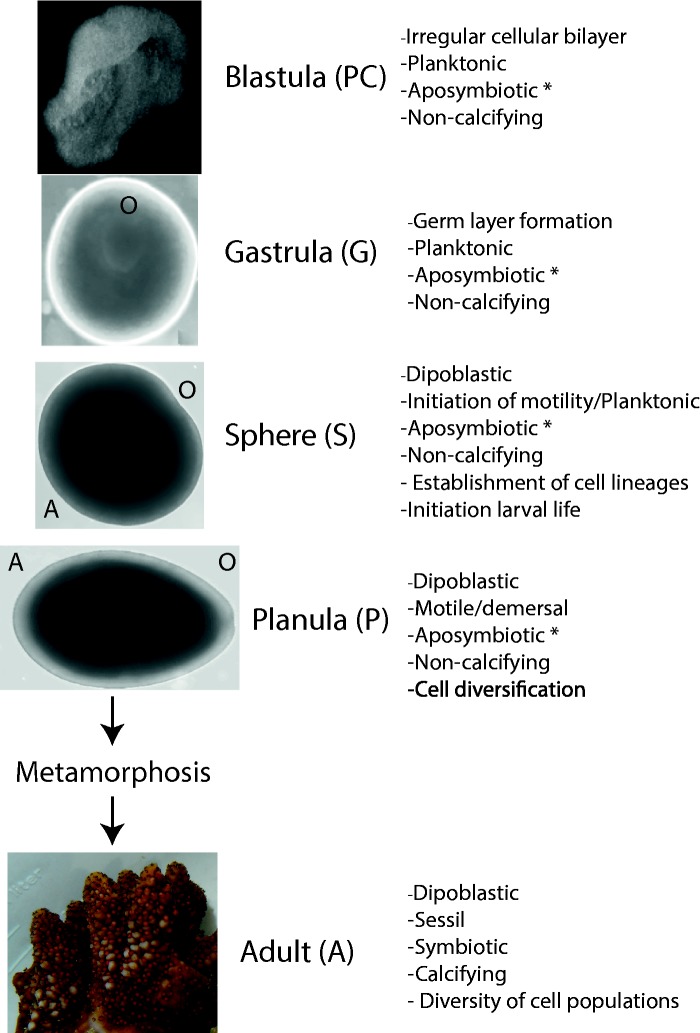Fig. 1.—
Coral development. Libraries representing blastula (PC), gastrula (G), postgastrula (S), planula (P), and adult polyps (A) were sequenced in triplicate. Following fertilization developing embryos experience a series of asymmetrical cell divisions that continue until they reach a very distinct blastula stage characteristic of “complexa” claded corals (10–12 h) known as the prawn-chip (PC). Morphogenetic movements during gastrulation (22–36 h) originates ectodermal and endodermal tissues, the blastopore becomes the oral pore (G). Dipoblastic larvae become motile resembling a rotating sphere (36–48 h) at this time cell differentiation of tissue specific lineages begins (S). Progressive elongation of the oral/aboral axis occurs (48–96 h) until larvae acquire the characteristic planula morphology (P). At this stage and under appropriate settlement clues planulae attaches to the substrate, metamorphose into an axial polyp that will originate a new colony (A). O/A within imagines represents the oral/aboral axis. *Presence/absence of Symbiodinium sp.

